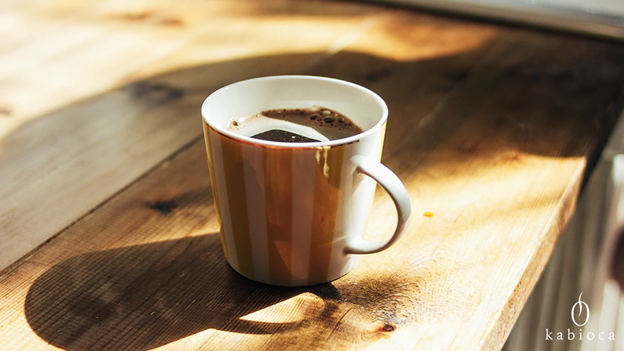
What is slow coffee
Slow coffee
For many years now, speed, automation and electronics have been the order of the day when it comes to our coffee consumption. But at a time when vintage and retro are back in vogue in many areas, coffee is no exception.
Slow coffee is making a comeback, allowing us to rediscover all the subtlety and flavour of the good coffee of yesteryear.
What are the advantages of slow coffee?
At first glance, the name probably doesn’t ring a bell. Slow coffee literally means “slow coffee”, in other words, a gentle method of extracting coffee. In practice, this may bring back a few memories: coffee filters, the kettle or the indispensable good old coffeemaker of your elders… If you want to enjoy a tasty, flavorful coffee, don’t hesitate to get your hands on these old appliances again, because Slow Coffee has many advantages.
This slow extraction method allows the coffee to reveal all its aromas. The result? A veritable explosion of flavor in the mouth. Similarly, thanks to a longer infusion, Slow Coffee produces a coffee with a higher caffeine content.
But the main advantage of Slow Coffee is its adaptability. You can play with the flavors, aromas, intensity and acidity of the coffee as you wish. Thanks to authentic manual extraction, you can easily control the quantity of water and coffee, the temperature, the grind and the brewing time of your preparation. So you can create dozens of different recipes using a single method.
How to prepare it?
There’s nothing like a gentle method to extract all the subtlety and flavor of a good coffee. Preparing a slow coffee is simple and within everyone’s reach, but there are a few subtleties you need to be aware of in order to obtain a perfect, tasty coffee.
As with all recipes, the choice of ingredients is essential to the success of your slow coffee. Pay particular attention to the coffee beans you choose. The darker and more heavily roasted it is, the more bitter and powerful your coffee will be. For slow coffee, choose a lighter bean, which will be milder and more balanced, and don’t hesitate to buy your coffee from a roaster who will grind it to a fineness suited to your equipment.
The second essential ingredient for preparing a slow coffee: water. This must be chosen with care, as water can quickly alter the taste of your coffee. We advise you to choose a neutral-tasting mineral water, which will fully preserve the aromas and flavours of your ground coffee.
The success of your coffee now depends on a number of conditions:
- extraction time
- water and coffee dosage
- the temperature of the water used
But these data are not universal and depend on the type of equipment and coffee maker you have.
Which equipment to choose?
Once you’ve carefully selected the ingredients you need to make your slow coffee, you’ll also need a coffeemaker designed for this extraction method. There are various types of coffeemaker for this purpose: filter, piston and vacuum.
The filter machine has been updated and perfected. Elegant and modern, the main advantage of this type of model is its ease of use. All you have to do is pour your ground coffee into the filter, then gradually add the water inside. Make sure you pour the water in a circle, and that it doesn’t run through the coffee for the moment. On average, this first pre-infusion stage only takes a minute or two. Then gently pour in the rest of the water in the same way, taking care that it runs through the coffee and not over the sides. Some hourglass-shaped coffee makers use this same process.
In a French Press coffee maker, the coffee is first brewed in hot water before being filtered through the piston. This type of machine produces a full-bodied, woody coffee very quickly: in just 3 or 4 minutes!
Finally, the vacuum machine, also known as the siphon coffee maker, will delight even the biggest coffee lovers. Unlike an espresso, where speed is of the essence, for a slow coffee with a vacuum coffee maker, allow between 10 and 30 minutes for preparation. Its operation is based on fluid mechanics, enabling you to serve coffees that are both pure and light.